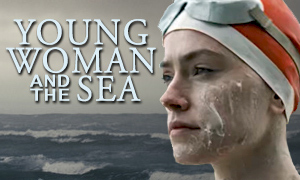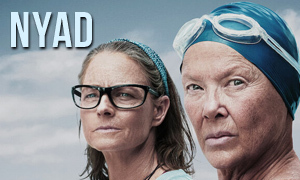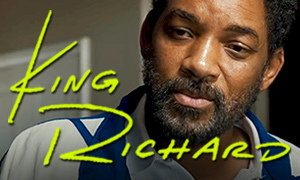True Spirit: History vs. Hollywood
Teagan Croft
Born: April 23, 2004
Birthplace:
Sydney, New South Wales, Australia
Jessica Watson
Born: May 18, 1993
Birthplace: Gold Coast, Queensland, Australia
Photo: A.Savin
Anna Paquin
Born: July 24, 1982
Birthplace:
Winnipeg, Manitoba, Canada
Julie Watson
Birthplace: Australia
Bio: Jessica's Mother
Josh Lawson
Born: July 22, 1981
Birthplace:
Queensland, Australia
Roger Watson
Birthplace: Australia
Bio: Jessica's Father
Bridget Webb
Born: 1996
Birthplace:
Brisbane, Australia
Emily Watson
Bio: Jessica's Older Sister
Why did Jessica Watson want to sail around the world?
According to the True Spirit true story, Jessica's desire to sail solo around the world began when she was 12 when her mother read Jesse Martin's book Lionheart: A Journey of the Human Spirit to her and her siblings as a bedtime story. Jesse Martin was a German-Australian sailor who in 1999 became the youngest person to sail solo, nonstop, and unassisted around the globe. Jessica had spent much of her life on the water and had taken sailing lessons with her brother and sisters. She had spent five years living on a 16-meter cabin cruiser with her family. They also lived on a retrofitted double-decker bus for a period of time.
She was quoted in The Los Angeles Times discussing the reason for her journey, "I wanted to challenge myself and achieve something to be proud of. And yes, I wanted to inspire people. I hated being judged by my appearance and other people's expectations of what a 'little girl' was capable of. It's no longer just my dream or voyage. Every milestone out here isn't just my achievement, but an achievement for everyone who has put so much time and effort into helping getting me here." As is noted in her book True Spirit: The True Story of a 16-Year-Old Australian Who Sailed Solo, Nonstop, and Unassisted Around the World, her father, Roger Watson, was against her going, and while her mother, Julie, was supportive, she was not living a missed dream vicariously through Jessica. It was clear to her coach and mentor Bruce Arms (represented to some degree by actor Cliff Curtis' Ben Bryant character in the movie) that the decision was very much her own.
How did Jessica Watson prepare for her around-the-world journey?
While conducting our True Spirit fact-check, we learned that like in the movie, she was heavily involved in the preparation for her trip, including overseeing various modifications to her boat, Ella's Pink Lady. The sailing vessel was refitted with a new galley, reconditioned water and diesel tanks, and underwent an entire reconstruction of the electrical system.
By that point, Jessica had roughly 6,000 ocean and 6,000 coastal miles of sailing experience. She had also taken numerous courses, including several maritime safety and first-aid courses. She completed a radar course, diesel engine course, radio operator course, and a yachtmaster ocean theory course.
How big was Jessica Watson's boat?
Her sailing vessel, named Ella's Pink Lady, was 10.23 meters long (33.6 feet). Built in 1993, the pink boat was a Sparkman & Stephens model S&S 34. French skincare brand Ella Baché sponsored the boat, hence the naming. Jessica Watson did not own the boat. It was lent to her by Australian adventurer Don McIntrye.
Did Jessica's boat collide with a Chinese cargo ship a month prior to her leaving on her around-the-world voyage?
Yes. In answering the question, "How accurate is True Spirit?" we confirmed that about a month before Jessica Watson left, she was en route from Brisbane to Sydney when her boat, Ella's Pink Lady, collided with the Silver Yang, a 63,000-ton Chinese bulk carrier. She had reportedly been taking a five-minute nap at the time of the collision and had failed to spot the Silver Yang on her radar prior to lying down. She also had forgotten to turn on her proximity alarms. "'No, no,' I go, 'It's alright, really, I'm okay, but lost half my mast, yeah,'" she stated after the accident. She managed to get the boat to port using the motor. Jessica said that the collision scene in the movie is "really accurate" (Entertainment Weekly).
A final report concluded that both boats were at fault, with the Silver Yang's watchkeeper failing to maintain an adequate lookout and spot her in time to avoid her. It's true that the accident ignited even more controversy around whether a 16-year-old girl should be attempting a solo circumnavigation. -60 Minutes Australia
Did Jessica receive a lot of pushback arguing that she was too young to sail solo around the world?
Yes. Like in the Jessica Watson movie, the prospect of a 16-year-old girl sailing solo, nonstop, and unassisted around the world indeed generated a considerable amount of controversy. Critics argued that she was too young and didn't have enough experience. The Australian Childhood Foundation raised concerns over whether a 16-year-old had the ability to fully understand the risks. Jessica would not be allowed assistance from anyone during her journey, nor would she be allowed to moor to another boat or to any port. However, advice via radio communication was permitted.
Is Cliff Curtis' character, Ben Bryant, based on a real person?
No. Ben Bryant is a fictional character that was created to represent a number of the different men who helped make Jessica Watson's journey possible. In a January 2023 Instagram post, Jessica wrote, "The fictional character Ben is one of my favourite things about the movie. Ben represents a whole team of people. While there are many who so deserve their own character @cliffcurtis_ has beautifully captured the spirit of these men who were so determined to see a young girl take on the world and the way they are some of my best mates. Forever grateful to everyone who played a part in making the voyage possible!"
One of the men the Ben Bryant character represents is Jessica's mentor and project manager, fellow sailor Bruce Arms. In the book, Jessica describes Bruce as being "crucial in getting me ready." Another experienced sailor who helped Jessica was Don McIntyre. He had sailed solo around the world in 1990, and he and his wife Margie bought the boat Jessica used for her around-the-world trip. Other men who contributed were Scott Young and Andrew Fraser, who acted as Jessica's managers and helped her attract sponsors.
Did Jessica Watson forget her hairbrush?
No, at least not on her round-the-world trip. "That happened on a sea trial," she clarifies. She did use a fork, having gotten the idea from sailor Jesse Martin, who forgot his brush when he circumnavigated the globe. The movie finds Jessica (Teagan Croft) taping two forks together and using that as a brush.
What route did Jessica Watson take when she sailed around the world?
Alone with her boat and the open ocean, the True Spirit true story confirms that 16-year-old Jessica Watson completed a global circumnavigation that was almost entirely within the southern hemisphere. She set out from Sydney across the Pacific Ocean to the northeast, briefly crossing the equator into the northern hemisphere. She then crossed back over the equator and sailed southeastward far into the freezing southern waters to round South America's infamous Cape Horn, where the Pacific and Atlantic Oceans meet. From there, she sailed northeastward through the higher latitudes and round the horn of Africa before reentering the unforgiving Southern Ocean as she made her way back into Australian waters, traveling a total of 24,285 nautical miles. The Jessica Watson map below traces her voyage.
Did Jessica Watson's boat steer itself most of the time?
Yes. Jessica Watson's Pink Lady boat was equipped with a self-steering wind vane system. Jessica called the system "Parker" after the chauffer of the pink Rolls-Royce in the British television series Thunderbirds.
Is the reporter in True Spirit based on a real person?
No, at least not directly. Todd Lasance's character, reporter Craig Atherton, is not directly based on a real-life individual. Instead, he represents all of the members of the media who were naysayers and criticized Jessica's plans. "There were some that were pretty damn similar to him," she said with a chuckle. "I was protected slightly from some of the intensity of it at the time because I was just so single-mindedly focused on this thing, which you need to be to do something like that. It was my team and my poor family who caught the worst of that, but it was intense." -Entertainment Weekly
Did Jessica perform the tradition of dunking herself in salt water when she crossed the equator for the first time?
Yes. In fact, she filmed the moment and shared the equator video with her followers. It could be found via Jessica Watson's blog. "Oh, it's my first time across the equator," she stated, "so uh, it's traditional to have a dunk in salt water as you go across." She then proceeded to pour a bucket of salt water over her head, similar to what she does in the movie.
Is Jessica Watson dyslexic?
Yes. "For a long time I struggled with reading and spelling," she wrote in her book, adding that she still has problems with spelling. She said that her mom and teachers realized early on that she was dyslexic. The language disorder is typically defined as a "difficulty recognizing and learning the connection between sounds and words." Jessica says that her mother always encouraged her affinity for books and read to her regularly.
What animals did Jessica Watson see on her journey?
A True Spirit fact-check reveals that Jessica reported seeing a variety of marine life, including dolphins, fish, and a blue whale. She saw various birds, including albatross that circled around her boat. In her blog, she also described a frightening moment at night when a large sea creature that she could not identify repeatedly jumped out of the water around her boat.
What did Jessica Watson do while she was on the boat?
"I always had something to do," she told 60 Minutes Australia. "I don't know what I did, but I always found something to do. There was always, you know, a boat to look after, bits and pieces of maintenance to do, and, you know, people to talk to, blogs to write, just sitting there soaking it in, reading. I read a lot, did a little bit of schoolwork."
Does Jessica Watson have any siblings?
Yes. As seen in the Netflix Jessica Watson movie, she has an older sister named Emily and a younger brother and sister, Tom and Hannah. Like her parents, her siblings were able to communicate with her via her satellite phone and email as she sailed.
Did Jessica Watson get knocked out by a frying pan during a storm?
No. In the first significant storm she encounters in the Netflix True Spirit movie, Jessica is knocked out when an unsecured frying pan hits her in the head. According to Jessica, the scene never happened in real life. "I feel bad calling out some of the things that weren't quite true, but no, no frying pan," she told Entertainment Weekly. "Although there was legitimate danger with stuff flying around inside the boat in a storm — household everyday objects become deadly. Keeping your cabin tidy is something I should have been better at."
Did Jessica Watson's parents fly over in a small plane?
Yes. Though it's not shown in the film, Jessica Watson's parents flew over her boat twice during her journey. The first time was in a twin-engine plane shortly after she rounded Cape Horn (pictured below) in January 2010. The flight was paid for by the media. Due to poor weather conditions, it took three tries until her parents were able to reach her location. "Hi, mum, how are you? How do I look from up there?" she asked her mom during the flyover. "You look so small on that huge ocean," her mother replied. They both shed tears during their conversation. Her parents flew over her again in April to celebrate her entering Australian waters.
Did Jessica Watson have to perform repairs during her journey?
Yes. In researching the question, "Is True Spirit accurate?" we learned that Watson indeed encountered several complications on her journey, including various repairs that she had to make to her boat. The repairs were chronicled on Jessica Watson's blog, including repairs to the mainsail, battery monitor, stove, toilet (twice), kettle, and the replacement of the wind generator blades. She eventually replaced the wind generator with a spare, and she replaced the engine's fuel pump after being plagued by engine trouble toward the end of her journey. "The little Yanmar engine is going again! A little delicately, but it is running with a water transfer pump rigged up in place of the fuel pump which had stopped working," she explained in her blog. "It's pretty dodgy with all the mismatching hoses but should do the job."
As for the leak that arises in the movie, Watson says that it didn't happen in real life. "There's quite a leak in the movie that it looks like I'm fixing with blu-tack. In reality, there was nothing major, which again, was a real testament to the preparation behind it and a lot of things going right; a lot of conservative decisions."
How many days was Jessica Watson alone at sea?
Jessica's solo, nonstop, unassisted around-the-world journey took 210 days (approximately seven months) and she logged 24,285 nautical miles, though her officially recognized sailing distance was considerably less. She departed Sydney Harbour on October 18, 2009 and returned on May 15, 2010.
Did Jessica encounter the monster waves shown in the movie?
Yes. She survived a total of seven knockdowns on her voyage, which is when a boat is knocked over on its side to roughly 90 degrees or less by wind or waves. In terms of sailing, it is characterized by the boat capsizing to the point that the mast touches the water. Some of the knockdowns were severe, including one in which Ella's Pink Lady was thrown upside down into the trough of a wave. Jessica clung to the handholds as things flew around the cabin and her feet inched up the wall and onto the roof, with the mast pushed 180 degrees into the water. This was one of four knockdowns that occurred during a late-January storm in the South Atlantic Ocean, which had produced 65-knot winds or greater.
The True Spirit movie true story confirms that in the latter portion of her journey, Jessica encountered three monster low-pressure systems that formed in succession off Antarctica and surged through the Southern Ocean, producing 50-knot winds and gigantic waves up to 12 meters (39 feet) high.
Was Jessica Watson's boat underwater?
In an intense moment in the Netflix movie, Jessica's boat is submerged upside down and is at least 15 feet underwater. Several minutes seem to pass before her boat resurfaces. The real Jessica Watson said that this moment in the film was dramatized. "But of course, there's movie magic involved as well," she said. "There are some details that certainly don't follow the reality, and sailors will, no doubt, pick them up. The big storm scene where the boat's underwater for quite some time, in reality, wasn't that dramatic. But in that moment, it certainly felt like it. So maybe it's sort of true to the feeling behind it." -Practical Boat Owner
She told Entertainment Weekly, "The 15 ft. underwater is real because my emergency beacon did self-activate as the boat sank. That happened. But the time I was upside down for, it certainly felt like a long time. I haven't really got a concept of how long it was in reality, but we are talking seconds compared to what we see in the movie, which stretches on forever in minutes and minutes and minutes. That's a little bit of an exaggeration there, but it was real to the experience of it feeling like forever."
How old was the real Jessica Watson when she completed her solo sailing trip around the world?
Like in the Netflix movie, Jessica was 16 when she sailed into Sydney Harbour on May 15, 2010 to complete her solo, nonstop, unassisted journey around the world. She stepped off the Pink Lady boat and into the arms of her relieved parents just three days before her 17th birthday.
How did Jessica Watson handle being alone at sea for so long?
Jessica says that she handled it "really well." "I'm not sure if that means that I'm really simple or not, but I really did enjoy being by myself," she told 60 Minutes Australia. "I obviously really missed everyone, you know, from the day, the minute I started out of Sydney Harbour, you know, it was something's missing and I missed everyone so badly, but I did, I really enjoyed it. You know, once I got used to it, I enjoyed, you know, the sort of freedom, the independence of being by yourself."
Though we don't see it in the Jessica Watson movie, she cried after she departed and the boat with her mom and dad on it had turned back (in the film, they bid her farewell from the dock). In her book, she mentions crying when she found out her brother got his first job because she couldn't be there to congratulate him. She also describes breaking down and crying prior to passing Cape Horn when she felt like she wasn't making any headway toward the cape. Her parents were scheduled to fly over and she felt guilty that she was delaying everyone. She later describes being in a "black hole" of depression for three days when she was several hundred miles from Australia, blaming her mood on the rainy weather but then saying that justification was "complete nonsense."
Did Jessica expect nearly a hundred thousand people to show up to welcome her home?
No, her surprise in the movie is true to real life. "I expected a few people here to meet me," she told 60 Minutes Australia, "but what we got coming into Harbour was just completely overwhelming." Roughly one hundred thousand people packed Sydney Harbour to welcome her home, including Australian Prime Minister Kevin Rudd, who called her the "newest Australian hero," to which she really did disagree. "I don't consider myself a hero, I'm an ordinary girl," she told the crowd. "You don't have to be someone special to achieve something amazing, you've just got to have a dream, believe in it, and work hard."
Did Jessica Watson chronicle her journey in a blog?
Yes. The True Spirit true story confirms that Jessica Watson's blog featured near-daily posts that she made about her journey. She also shared many pics and several videos with her growing number of supporters. Each one of her posts received hundreds of comments, mostly wishing her well. Though she has a new website at JessicaWatson.com.au, her original blog from her journey can still be read at YougestRound.Blogspot.com. It's a must-read if you want a better idea of what her real-life trip was like.
Did Jessica Watson's journey add up to an officially recognized circumnavigation?
No. Technically, her primarily southern journey did not go far enough north of the equator to satisfy the World Speed Sailing Record Council (WSSRC) to be a true around-the-world trip. The WSSRC, which is the official record body, recognizes a full circumnavigation of the globe as having traveled an orthodromic distance (great circle) of at least 21,600 nautical miles, the circumference of the Earth. According to Sail-World.com, Jessica's voyage came up at least 2,000 nautical miles short and therefore would not go into the WSSRC's record books as a full global circumnavigation.
It's true that her own log had her traveling 24,285 nautical miles, but official sailing distances do not include the amount her vessel tacked and detoured for weather. The 1999 officially-recognized circumnavigation of one of her idols, German-Australian sailor Jesse Martin, went significantly farther north of the equator.
"I could give you a million technical arguments, you know, my trip is no different to so many other people who have circumnavigated and you know become very famous for doing it," said Jessica, "but it's like I said, it doesn't worry me. There's always going to be someone out there who says something, and possibly because they just don't want to believe that it's possible for a 16-year-old to sail around the world."
In her book True Spirit, she stated, "If I haven't been sailing around the world, then it beats me what I've been doing out here all this time!" Her manager, Andrew Fraser, defended her journey by pointing out that the WSSRC does not recognize records achieved by sailors who are not yet eighteen, so their input doesn't matter. He argued that it was never stated she would be going for a world record, simply that she would become the youngest person to circumnavigate the globe solo, nonstop, and unassisted (Brisbane Times).
In the book, Jessica says that she wrote several letters to the WSSRC asking the organization what she had to do to secure the record. They responded by stating that she would not be able to since age records were no longer recognized. The "youngest" category was removed in an effort to prevent ambitious parents from sending ever-younger kids out to sea. Still, she felt that she had done everything necessary for the record, including starting and returning from the same point and crossing the equator and all meridians of longitude. She pointed out that she sailed "a little longer" than Kay Cottee's solo, unassisted, and nonstop circumnavigation, which was recognized by the WSSRC.
Where can I see Jessica Watson's boat, Ella's Pink Lady?
The nearly 34-foot yacht was purchased jointly in 2011 by the Queensland and Commonwealth governments for $300,000. It is currently on display at the Queensland Maritime Museum.
Where is Jessica Watson today?
After successfully completing her around-the-world journey, Jessica wrote about it in her 2010 book True Spirit, which became the basis for the 2023 Netflix movie. The TV documentary 210 Days, narrated by Richard Branson, was also released in 2010. It featured footage of Jessica before, during, and after her solo trip. In 2011, she was named Young Australian of the Year, and in 2012, she was awarded the Order of Australia Medal. Jessica became involved in various projects, including becoming the youngest skipper in Australia's famous Sydney to Hobart yacht race. Her team, which was the youngest ever to compete, took second in their division. Humanitarian work included becoming a Youth Representative for the United Nations World Food Programme, a role that took her to far-away Laos and refugee camps in Lebanon and Jordan.
According to her website, Jessica graduated from university, completed an MBA, and was a founding member of the marine start-up Deckee, which advertises itself as an "all-in-one boating app" that combines official information with crowdsourced reports, focusing on marine weather, safety alerts, activity logging, location sharing, official regulations, and local knowledge. In 2014, she gave a TEDx Talk in Brisbane in which she discussed her experience sailing around the world. She wrote a second book that was published in 2018, a sailing-themed middle-grade novel titled Indigo Blue. She's been a sought-after corporate speaker and has worked as a management consultant as part of Deloitte's Human Capital consulting team. In 2021, she was a consultant on the True Spirit Netflix movie about her 2010 circumnavigation.
Is Jessica Watson married?
In 2021, tragedy struck when Jessica Watson's boyfriend of ten years, Cameron Dale, 29, died six weeks after suffering a catastrophic stroke. The pair had met at Hamilton Island's Race Week in 2011, the year after Jessica's solo circumnavigation. Like Jessica, he was a passionate sailor and had spent days trying to meet her. At the time of Cameron Dale's death, Jessica had been acting as a consultant on the True Spirit movie and continued to do so after his passing. However, she points out that she was not heavily involved in the shooting of the movie, "Because obviously, I was with Cam in an ICU (Intensive Care Unit)."
On Instagram, she wrote, "On Monday, 30 August 2021 we lost our Cam – my long-term partner in every aspect of life and planned future. ... Cam and I have been inseparable since 2011, our shared world centered on messing about on boats. Describing what Cam means to me is impossible – everyone who knows us understands how much we simply loved each other. ... Being Cam's 'Jess' is the role I'm most proud of." Just over a year later, The Weekend Australian Magazine wrote an article about her loss. In it, she stated, "I've been called courageous for my sailing exploits – but the courage it's taken to get through this is incomparable."







